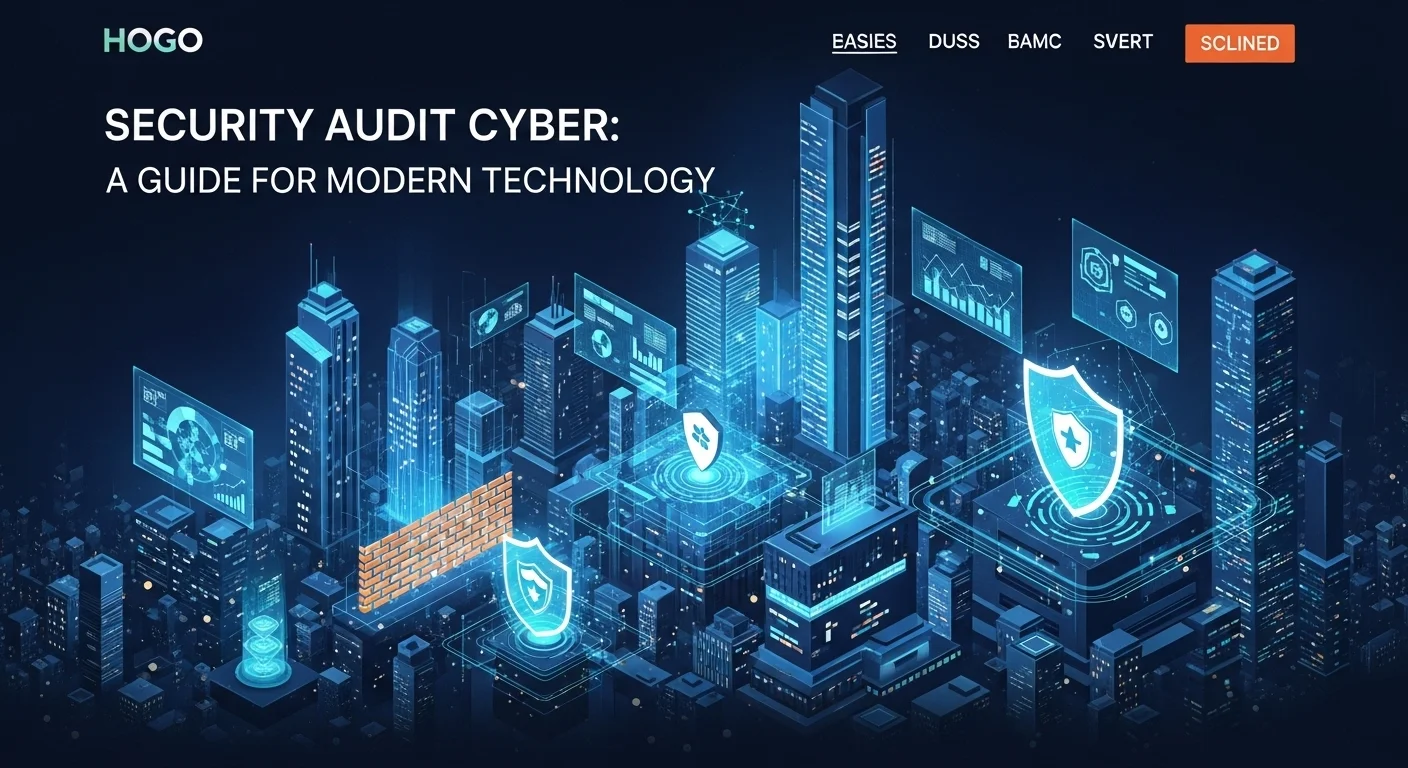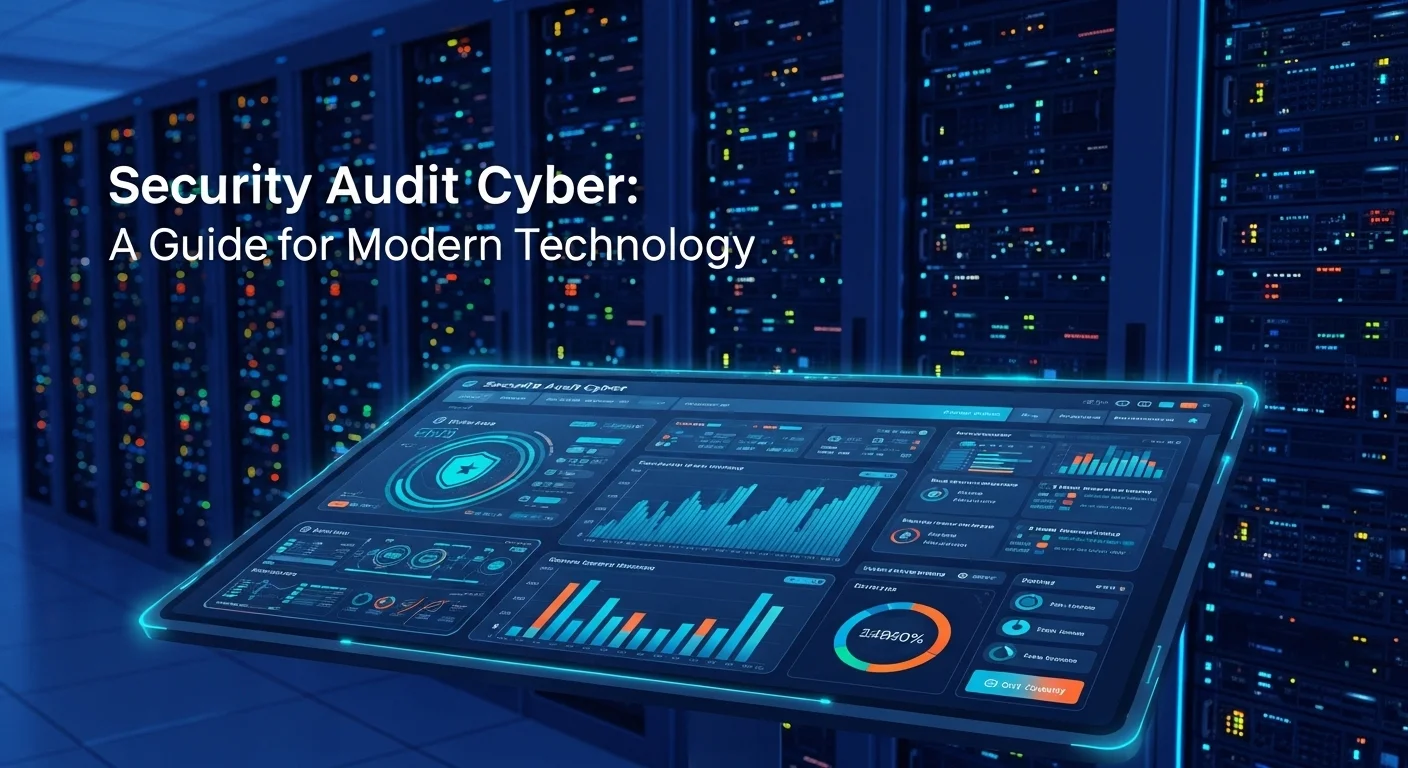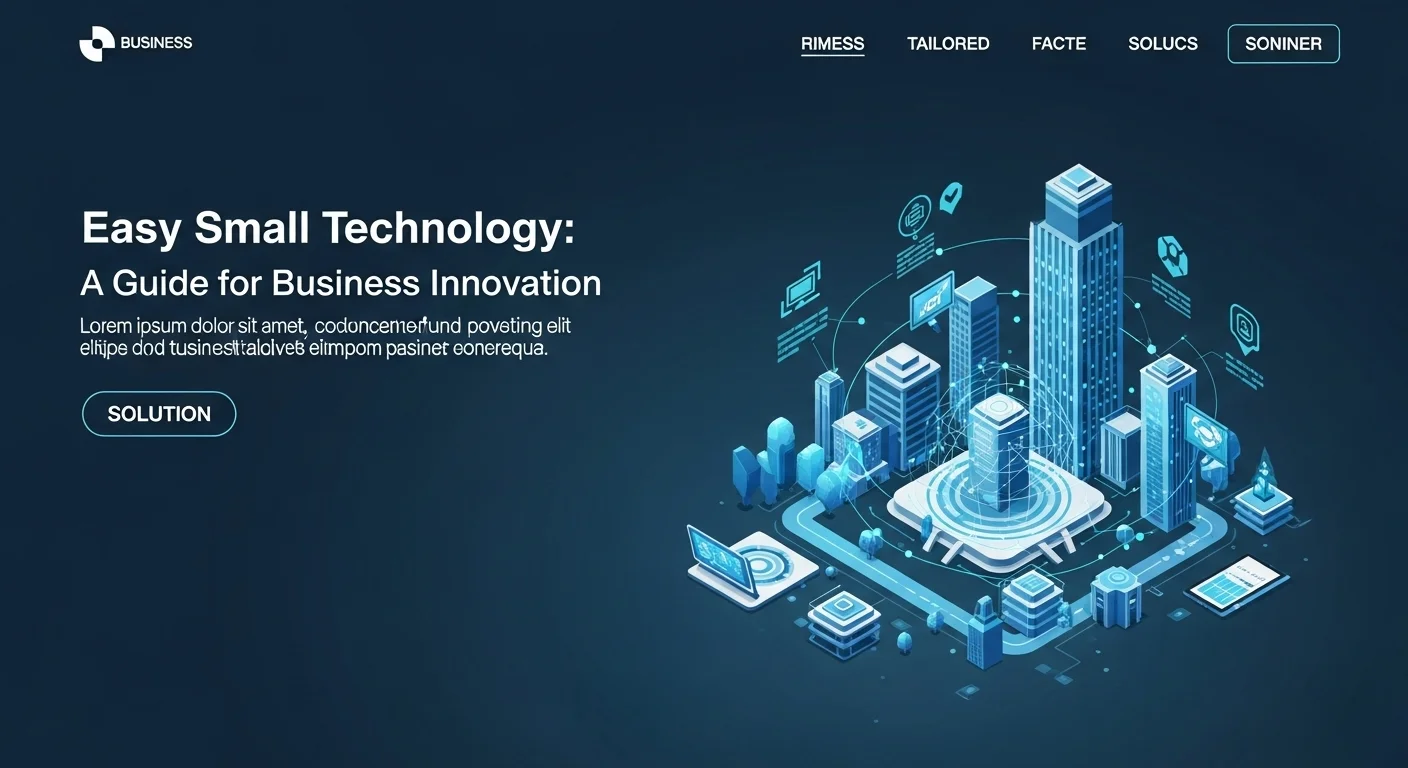Cybersecurity Audits Explained: Your Guide to Protecting Your Business

Executive Summary
I've been in the cybersecurity field for over fifteen years, and if there's one thing I've learned, it's that you can't protect what you don't fully understand. That's where a cybersecurity audit comes in. It's not some scary, technical ordeal; think of it as a comprehensive health check-up for your company's digital life. This article is your guide to understanding what these audits are, why they are absolutely essential in today's world, and how they form the foundation of a strong, resilient business. We'll walk through the process step-by-step, discuss how to find a trustworthy audit partner, and explore the real-world benefits—from meeting legal requirements to earning your customers' confidence. Whether you're a tech leader or a business owner, this is your roadmap to navigating digital risks with confidence.
Table of Contents
Table of Contents
- What is a Cybersecurity Audit and Why Does It Matter?
- The Complete Guide to the Audit Process
- Tips and Strategies for a Successful Audit
What is a Cybersecurity Audit and Why Does It Matter?
In a world where almost every part of business relies on technology, the security of your digital infrastructure isn't just an IT issue—it's a core business function. A cybersecurity audit is a systematic, in-depth evaluation of your organization's security. I like to compare it to a thorough home inspection before you buy a house. You don't just peek in the windows; you bring in an expert to check the foundation, the wiring, and the plumbing to find hidden problems before they become disasters. That's what an audit does for your business's technology.
This isn't just about running a quick scan for viruses. A cybersecurity audit goes deep into your entire IT world. We look at everything: your hardware, the software you use, how you handle sensitive data, and even the human side of security, like employee training. The goal is to get an honest, unbiased snapshot of your security health. This allows you to shift from being reactive—cleaning up a mess after a security breach—to being proactive, fixing weaknesses before attackers can find them. I've seen firsthand the devastating cost of a data breach, and trust me, preventing one is always the better option.
It's also important to know that an audit is different from a simple vulnerability scan. A scan might give you a list of potential weaknesses, but a security audit takes it a step further. It measures those weaknesses against specific standards and regulations (like GDPR, HIPAA, or ISO 27001) to tell you how serious the risk is. It answers the crucial question: 'Are we doing enough to meet our legal and business responsibilities?' This makes the audit an indispensable tool for good governance and risk management.
Why Audits are a Must in Today's Tech Landscape
Technology changes in the blink of an eye. Things like cloud services, remote work, and AI create incredible opportunities, but they also open up new doors for cyberattacks. A regular security audit ensures that as your technology evolves, your security does too. Without it, you can easily develop blind spots, leaving critical data wide open to threats.
For instance, a system-focused audit takes a close look at the building blocks of your IT: your servers, networks, and databases. It checks that they are configured securely, updated with the latest patches, and that only the right people have access. In a cloud setup with AWS or Azure, this means reviewing configurations to make sure you haven't accidentally left a sensitive database exposed to the entire internet. It happens more often than you'd think. The audit provides a structured way to check every corner of your tech stack.
The Real-World Business Benefits
Beyond the technical side, a good audit delivers powerful benefits that resonate throughout the business.
1. Smarter Risk Management: The number one benefit is getting a clear picture of your risks. By knowing exactly where your vulnerabilities are, you can invest your security budget where it will have the biggest impact, instead of wasting money on the wrong solutions.
2. Staying on the Right Side of the Law: Many industries, like healthcare and finance, have strict data protection rules. A compliance-focused audit isn't just a good idea; it's often legally required. It provides the proof you need to show regulators that you're taking security seriously, helping you avoid hefty fines and legal trouble.
3. Building Customer Trust: In our digital age, trust is everything. When customers know you're committed to protecting their data—and you can prove it with regular, independent audits—it builds incredible loyalty and can set you apart from the competition.
4. Keeping the Business Running: A major cyberattack can stop a business in its tracks. An audit not only strengthens your defenses but also usually includes a review of your plan for when things go wrong. This ensures that if a breach does happen, you can get back on your feet quickly, minimizing disruption and financial loss.
5. The Value of an Outside Expert: While you can do some checks internally, hiring an external cybersecurity audit company brings a fresh, unbiased perspective. I've found that an outside team is free from internal politics and can spot issues that internal staff might be too close to see. Their report also carries more weight with board members, investors, and regulators. Choosing the right firm is key; you want a partner who understands your industry and can provide clear, actionable advice.
In the end, a cybersecurity audit is an essential investment. It's the process that allows you to truly understand and manage your digital risks. It provides the critical insights you need to protect your assets, meet your obligations, and build a resilient business that's ready for whatever the future holds.

Complete guide to Security Audit Cyber in Technology and Business Solutions
So, you're ready for a cybersecurity audit. What does that actually look like? It's a structured journey, not a chaotic scramble. Think of it as a methodical project with a clear beginning, middle, and end. Here’s a complete guide to the process, from the initial planning to the final follow-up, giving you a roadmap to strengthen your business defenses.
The Four Phases of a Cybersecurity Audit
From my experience conducting hundreds of these, a successful audit always follows four distinct phases.
Phase 1: Planning and Scoping. This is the foundation for everything that follows. Before we touch a single computer, the audit team and your organization sit down to agree on the goals. What are we trying to achieve? Is it to pass a compliance check for a new regulation? Is it to test a new app before it goes live? We clearly define what's 'in scope'—which systems, networks, and locations will be part of the audit. We also identify key people from IT, legal, and management to ensure the audit is aligned with what the business truly needs. During this phase, we gather all the necessary documents, like network maps, security policies, and past reports.
Phase 2: Execution and Fieldwork. This is where the detective work begins. Our team gets hands-on, combining technical tests with human conversations. We'll interview staff to understand how things really work, from how a new employee gets computer access to how a security alert is handled. We review the settings on firewalls, servers, and other key devices. This is also when we conduct the technical tests to find vulnerabilities. The whole point is to gather concrete evidence to see how well your security controls are actually working.
Phase 3: Analysis and Reporting. After the fieldwork, we analyze all our findings. We sift through the data to identify vulnerabilities, gaps in your defenses, and any areas where you might not be compliant with regulations. This is where raw information becomes powerful insight. We typically categorize our findings by risk level (like Critical, High, or Medium) to help you prioritize what to fix first. The final result is a detailed audit report. A good report, in my opinion, doesn't just list problems. It clearly explains the risk, what the business impact could be, and gives practical, step-by-step recommendations on how to fix it.
Phase 4: Remediation and Follow-Up. An audit is only valuable if you act on the findings. In this final phase, your organization creates a plan to fix the issues we identified. This could mean installing software updates, changing system configurations, or improving employee training. We often stay involved to verify that the fixes are working correctly and have truly reduced the risk. The best companies then set up a continuous monitoring process to stay secure long after the audit is over.
Common Technical Methods and Techniques
To get a full picture, a security audit uses several technical methods to test your defenses.
Vulnerability Scanning: We use automated tools to scan your systems for thousands of known security flaws. It's a bit like a spell-checker for your network, quickly finding things like missing security patches or weak, default passwords. It's a great starting point.
Penetration Testing (Pen Testing): This is a more hands-on test where our ethical hackers simulate a real-world cyberattack. We actively try to break in to see how far we can get. There are a few flavors of this:
- Black Box: We start with zero knowledge, just like an external attacker would.
- White Box: We have full access to your system's blueprints and code, which helps us find deep-seated flaws and simulate an insider threat.
- Grey Box: We have some limited information, like a standard user account, to see what a malicious employee could do.
Configuration Review: This is a careful, line-by-line review of the settings on critical equipment like firewalls and servers. We compare your live setup against industry best practices and your own security policies to make sure everything is locked down tight.
System-Level Audit: Here, we go deep into specific systems, checking security logs, user access lists, and software installations. This helps us ensure that your computers and applications are secure and that we can spot any suspicious activity.
Choosing the Right Audit Partner
The market is full of cybersecurity audit companies, so how do you choose the right one? Here's what I tell my clients to look for:
- Credentials and Certifications: Look for firms with certified experts (like CISSP or CISA). It's a sign of professionalism and a high level of expertise.
- Industry Experience: A firm that understands the unique challenges of your industry, whether it's healthcare or e-commerce, will provide a much more valuable audit.
- Their Process and Tools: Ask them about their methodology. Does it follow a recognized standard like the NIST Cybersecurity Framework? What tools do they use?
- Reporting Style: Ask for a sanitized sample report. If it's just a confusing dump of technical data, walk away. You need a report that is clear, concise, and gives you a roadmap for action.
- Reputation and References: Don't be afraid to ask for references. A good firm will have a history of happy clients who can vouch for their work.
Internal vs. External Audits
Finally, should you use your own team or hire an outside firm? An internal audit can be cost-effective, as your team already knows your systems inside and out. However, they can sometimes lack objectivity. An external audit from a specialized company provides an independent, unbiased view, which is often required for legal compliance and gives your board greater peace of mind. Many businesses find that a hybrid approach—doing regular internal checks supplemented by an annual external audit—offers the best of both worlds.
In short, a cybersecurity audit is a comprehensive, cyclical process. It's a powerful tool that, when done right, can transform your security from a nagging worry into a strategic advantage.

Tips and strategies for Security Audit Cyber to improve your Technology experience
Getting through a cybersecurity audit isn't just about getting a passing grade. It's a chance to genuinely improve your technology, making it safer, more reliable, and more trustworthy for everyone. It's about building security into the DNA of your business. Here are some of the most important tips and strategies I've gathered over the years to help you get the most out of your cybersecurity audit.
Best Practices for a High-Impact Audit
To make sure your audit is more than just a box-ticking exercise, follow these best practices:
1. Start with 'Why': Know Your Audit's Goal. Before you even contact an audit firm, be crystal clear about what you want to accomplish. Are you preparing for a new regulation? Checking the security of a new product? Benchmarking against competitors? Having specific goals will focus the audit and ensure the final report gives you the answers you actually need.
2. Make it a Team Sport. A security audit is not just for the IT department. I've seen the most successful audits happen when legal, HR, operations, and leadership are all involved from the start. A technical problem can have huge legal or business consequences, so you need that holistic view. This collaboration also makes it much easier to get everyone on board with implementing the recommended fixes.
3. Think Continuous, Not Annual. The most secure companies I work with treat security as an ongoing process, not a once-a-year event. While you might have a big external audit annually, you should supplement it with your own regular internal reviews, automated scans, and continuous monitoring. This helps you catch new issues as they appear and keeps you from scrambling right before the auditors show up.
4. Create a Post-Audit Action Plan. The audit report is where the real work begins. Turn those findings into a concrete action plan. Prioritize the list based on risk—fix the most critical things first. Assign each task to a specific person or team, set deadlines, and track your progress. This creates accountability and ensures that the audit leads to real improvements.
5. Don't Just Fix, Learn. Look for patterns in the audit findings. Do you keep seeing issues with weak passwords or outdated software in one department? These trends often point to a deeper issue, like a gap in your training or a flawed process. Use the audit as a chance to fix the root cause, not just the symptom. Maybe you need a better security awareness program or a new tool to automate updates.
Leveraging Modern Tools and Technology
Today, we have amazing tools that can make the audit process smoother and your security stronger all year round.
Governance, Risk, and Compliance (GRC) Platforms: These tools help you manage the entire audit process in one place. You can track your security controls, gather evidence, manage findings, and monitor your fixes, making everything much more efficient.
Security Information and Event Management (SIEM): A SIEM system is essential for a thorough system audit. It gathers log data from all over your network and analyzes it in real-time, helping you spot threats and providing the detailed records you need for compliance and investigations.
Vulnerability and Penetration Testing Tools: Automated scanners are a staple for finding technical flaws. For deeper tests, ethical hackers use powerful frameworks to simulate real-world attacks. Many companies now use Breach and Attack Simulation (BAS) platforms that automatically and continuously test your defenses against the latest threats.
Cloud Security Posture Management (CSPM): If you use the cloud, these tools are a lifesaver. They constantly scan your cloud environments (like AWS, Azure, or GCP) for misconfigurations and security risks, which are a major cause of data breaches. They automate a huge part of the cloud security audit.
How Audits Improve the Overall Technology Experience
When you do it right, a security audit has positive ripple effects across the entire business.
Building a Security-Aware Culture: The audit process naturally raises security awareness across the company. When employees understand the risks and their part in preventing them, they become your first line of defense. Training that is based on real audit findings is incredibly effective at reducing human error.
More Reliable and Stable Systems: The same things that improve security—like regular updates and proper configurations—also make your systems more stable. A good audit helps eliminate weaknesses that could cause system crashes or data loss, improving your overall business uptime.
Innovating with Confidence: When you know your security is solid and validated by regular audits, you can embrace new technology with confidence. Whether you're moving to the cloud or launching an AI project, having a strong security foundation allows your business to move faster and innovate without being held back by fear.
To stay ahead, I always recommend that organizations consult resources from leading bodies like the NIST Cybersecurity Framework. It provides a flexible and common-sense guide for managing risk that can be adapted to any business.
Ultimately, a cybersecurity audit is a strategic journey. By following these tips, you can turn it from a periodic chore into a powerful engine for improvement. With the right internal practices and a capable audit partner, you can ensure your technology is not a weakness, but a secure, resilient asset that fuels your growth.
Expert Reviews & Testimonials
Sarah Johnson, Business Owner ⭐⭐⭐
Good information on cybersecurity audits, but I wish there were more real-world examples for small business owners.
Mike Chen, IT Consultant ⭐⭐⭐⭐
A helpful article that gave me a better grasp of security audits. Some of the technical parts could have been a bit simpler, though.
Emma Davis, Tech Expert ⭐⭐⭐⭐⭐
Fantastic article! It was incredibly comprehensive and perfect for my specialization. I understood every concept clearly.



